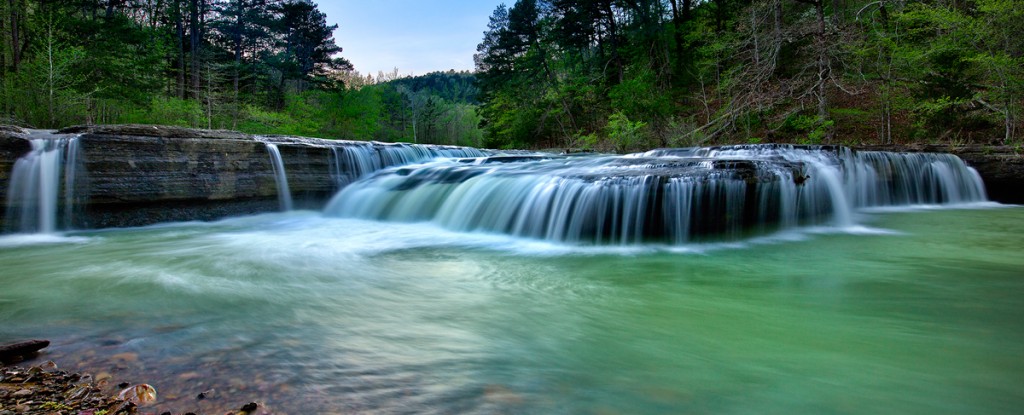I have recently added several new panoramas taken throughout Arkansas to my Panorama Gallery. You can view the images here:
Over the years, I have started to shoot more panoramas than standard format photography as I feel it gives a better view of landscape subjects. Many times I will shoot both ways, but after reviewing the images I will come back to the panorama images. I have found three ways to accomplish this:
1. You can take the shot in a panorama format, which involves using special equipment to keep the foreground and background in focus.
2. You can take one high resolution image and crop into it with a 3:1 ratio. This requires a image of 50MP or more to allow for a large print.
3. Setup your camera for a nodal pan.
With my current equipment I can work this either way since I can now use my Arca rm3di camera to allow for a stitching capture. I can pick up as much as 18mm of new image details on each side of the center, and since I am stitching, not panning the camera, I will not have to worry about parallax issues. Parallax comes about when you pan your camera/lens combination without consideration for the nodal point of that particular camera/lens. What will occur most times with parallax errors is foreground and background elements of your subject will not line up.
With a digital back of 60MP it’s also possible to crop into a single image to a 3:1 ratio which is the standard for panoramas. This most times will leave me around 25MP to work with and from that I can get a print sized to around 24″ x 60″ or 36″ x 72″. Working this way is much faster as you don’t have to worry about merging the stitched images together. During this process you can run into color balance issues or blurring, as the wind may have picked up during the stitching process and effected one of the 3 stitches. This process allows you the greatest amount of freedom to compose as you can shoot with a tripod if the shutter speed allows it.
When time and conditions permit, I will try to work in a nodal pan also. This is by far the most complicated of the three solutions as you have to have several factors taken into account:
1. You will need a tripod that is level
2. Your camera and lens need to set to the correct nodal point
3. A panning head is usually required to help keep the panning lined up.
4. Some form of stitching software will be needed to put the images together
5. Most times even with a nodal solution, there will be issues while lining up the images
6. Working with wide angles lenses is still complicated
The main reason I don’t prefer to use this setup is that you need to be level as if you pan with a non-level tripod, you will add all types of distortions to the final image. Many times even if you have the camera/lens set to the correct nodal point, many of the images won’t come together correctly since I am mainly working with wide angle lenses. This solution does allow for the highest amount of final resolution as you are using about 80% of the sensor on each shot the rest being lost to overlap.
Panoramas are very challenging, but can offer the photographer an excellent final image that can be printed in many more possible output solutions.




Recent Comments